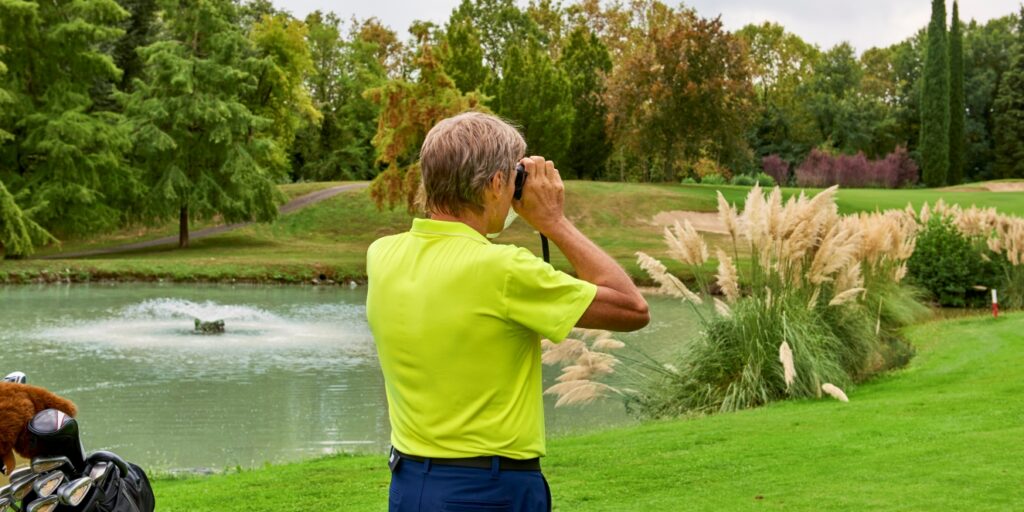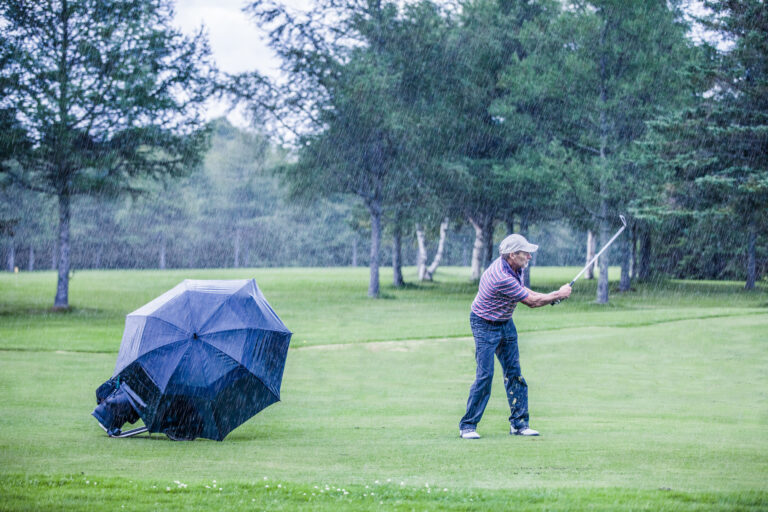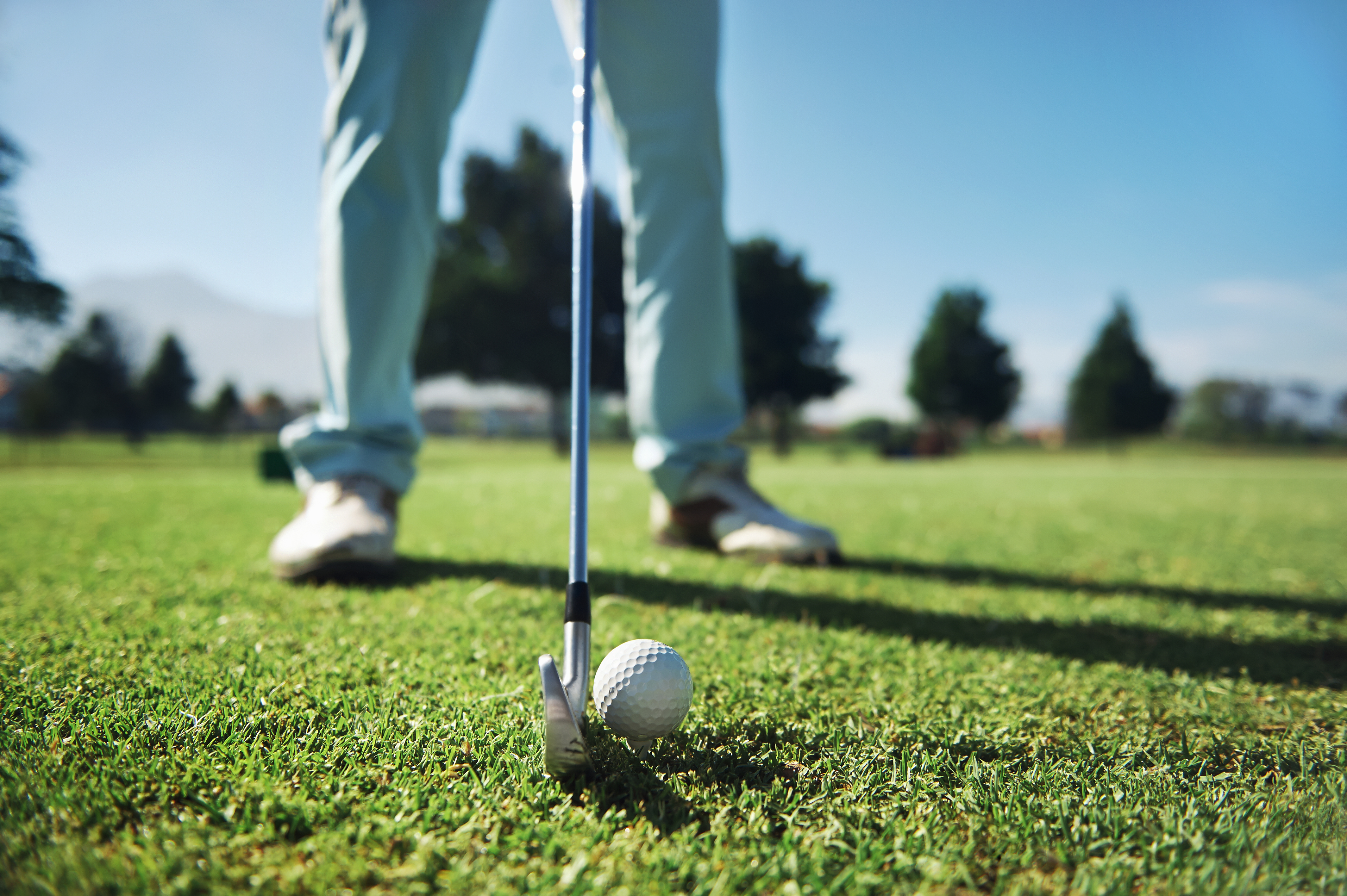Why Is Golf Measured in Yards? Unravel the Surprising History
Why is golf measured in yards? There’s a simple answer to this question; however, the best way to explain is by taking a deeper look into the history of golf yardages and how to use them effectively, so the next time you have an approach shot, you can pick the right club and determine the correct distance to the target.
Disclosure: Some of the links below are affiliate links. This means that, at zero cost to you, I will earn an affiliate commission if you click through the link and finalize a purchase.
Why Golf Is Measured in Yards
To give a simple explanation as to why yards, for the most part, is the metric of choice for many golf courses in the world is because yards are comprised of three feet, making it easier to measure courses in yards than feet. It’s important to mention some countries measure golf courses in meters; however, in the United States, where the PGA Tour, LPGA Tour, and Champions Tour play most of their tournaments, golf courses are measured in yards.
It probably would not make much sense to turn a 400-yard par 4 into a 1200-foot par 4. The latter just does not make sense from a convenience standpoint. Measuring a golf course in yards makes it easier for course designers and golfers to find the correct distance.
The History of Golf Course Measurement Rules
Course measurement tactics and rules have changed quite a bit over the years. During the turn of the 20th Century, golf courses were measured by taking the contour of the ground into consideration; however, in 1967, the United States Golf Association (USGA) made a rule requiring all golf courses to be measured using the line-of-sight method, and a steel tape was used as the primary measuring device.
In 2012, the USGA altered the method of measuring yardages to utilize surveying tools, satellites, or devices such as rangefinders, which golfers and course designers can use to find the exact length of a hole or determine the distance of an approach shot.
How Are Golf Holes Measured?
All golf holes are measured in a straight line from the center of the tee box to the middle of the green. The USGA requires every golf course to have distance markers next to the center of each tee box—this is where the official measurement of the hole begins. Dogleg holes are measured from the tee to the center of the fairway where the angle or corner of the hole begins, then to the center of the green. For those unfamiliar with the term, dogleg refers to a hole that is not straight but curves to the left or right from tee box to green.
How Is Distance Measured in Golf?
As golfers, it’s our job to ensure we have the correct distance when we’re hitting a tee shot or approach shot. Without the proper distance, we can never be successful in golf because we will lack consistency.
A rangefinder is an excellent tool for measuring yardage, or golfers can accurately measure yardage using a GPS, which you can utilize as a smartphone application.
One of the best rangefinders on the market at the moment is the Bushnell Tour V5, which I have personally tried and find it is all you will need on the course at a great price.
Once you have the correct equipment for measuring distances, you can understand how far you hit each club and make notes or even a golf club distance chart on paper or your smartphone. You can even download applications onto your phone or tablet that will track your club distances and keep an average of how far you hit each one. With the use of technology at your fingertips, there is no reason why you cannot keep track of all of your golf stats, including scores, distances, fairways hit, greens hit, and short game stats, such as putts per round and sand saves.

Know Your Club Distances
It’s crucial to practice hitting shots on the driving range at targets to see how far you hit each club in your bag. It’s possible but not easy to measure club distance with a rangefinder; however, advanced distance-measuring devices, such as Trackman, are available but can be expensive to purchase. Instead, I recommend finding another golfer or an instructor who owns a Trackman or GCQuad you can borrow or who is willing to set aside time for you to use it and even get a lesson simultaneously. As mentioned above, there are also downloadable applications that are accurate enough to understand how far you hit each club in your bag.
Keep in mind there is a difference in carry distance and total distance. For instance, you may hit your 4 iron 190 yards, but 15 yards may be roll, so your carry distance would only be 175 yards. Knowing the difference between carry distance and roll is essential because if you have a shot distance of 190 yards on your approach and the pin is in the front of the green, you must carry the ball almost the total distance.
Carry refers to how far you fly the ball with a specific club. Conversely, roll refers to the distance a ball continues to move after hitting the ground. For example, if you hit a 7 iron 160 yards in the air with 10 yards of roll (a total distance of 170 yards), but have to play a shot to a pin that requires you to fly the ball 170 yards, then you need to club up and hit a 6 iron. These sorts of situations fall under the category of club selection and are part of course management which every golfer needs to know if they want to play great golf and shoot better scores.
Gauging the correct yardage and knowing the carry and total distance of each club in your bag is essential to hitting better shots and avoiding costly mistakes, like hitting your ball in a water hazard or bunker.
Bonus Tip: It's also crucial to consider elevation and wind when determining what club to hit because there will be times when you will need to take one or two clubs more or less due to wind or hitting down or uphill.
Golf is a game of precision. Although mistakes will happen, the more precise you make your club and shot selection, the easier it will be to minimize errors and play better golf—this is especially true for beginner golfers, as their club distances are likely to change as they improve.
Check out my article on creating a scratch golf practice schedule for more tips. Although I gear the program toward a scratch or professional player, golfers of any skill level will benefit from the information.








